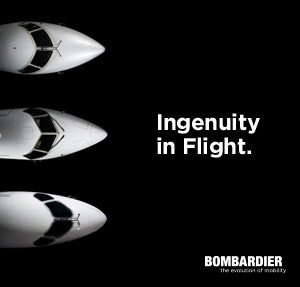GE Aviation Moving To Apply Ceramic Matrix Composites to the Heart of Future Engines
Written by thomas · Filed Under Aeronautics NewsMarch 9, 2009
A Technology Leap
EVENDALE, Ohio – March 9, 2008 – It is no simple feat introducing
durable, lightweight composite components into the “hot section” of a
flying jet engine. But GE Aviation is achieving this elusive,
technical milestone.
The GE Rolls-Royce Fighter Engine Team’s F136 development engine for
the Joint Strike Fighter (JSF) contains third-stage, low-pressure
turbine vanes made by GE from ceramic matrix composites (CMC). This
could lead to the first commercial use of CMCs in a jet engine’s hot
section (combustor and turbine areas) when a F136-powered JSF begins
flight testing in 2010.
CMC development is a key initiative at GE Aviation, and an enabling
technology in several of GE’s private and government-funded engine
demonstrator programs now underway. Also, CMC components are a key
feature of GE’s eCore program, the cornerstone for the company’s
next-generation of jet engines for narrow-body, regional, and business
jets.
CMCs are made of silicon carbide ceramic fibers and ceramic resin,
manufactured through a highly sophisticated process, and further
enhanced with proprietary coatings.
They are highly desirable for jet engine components for two main
reasons: 1. They are lightweight – one-third the density of metal –
providing weight reduction and thus, better fuel efficiency. 2. They
are durable and more heat resistant than metals, requiring less
cooling air, and thereby improving overall engine efficiency. Simply
put, removing cooling air allows a jet engine to run at higher thrust
and/or more efficiently.
GE Aviation and GE’s Corporate Research Center have pursued CMC
technology for more than 15 years. Several years ago, GE Aviation ran
a government demonstrator engine with a combustor liner and
low-pressure turbine blades. GE Aviation produces CMC at its facility
in Newark, Delaware.
“Developing new jet engine materials takes many years of investment
and commitment,” said Robert Schafrik, GE Aviation’s general manager
of materials and process engineering. “But the benefits can provide a
considerable competitive advantage. CMCs are a new frontier that will
raise the bar in jet engine performance.”
GE Aviation has already led the jet propulsion industry in advancing
composites in the “cold section” of jet engines with polymeric matrix
components made of carbon fiber and epoxy resin. In 1995, GE
introduced the first carbon fiber composite front fan blade in an
airline engine with its GE90, which powers the Boeing 777. For the
new GEnx engine, which will power the Boeing 787, GE will introduce
both composite fan blades, using the same fibers, resin, and
manufacturing processes as the GE90 blade, and a fiber-braided
composite fan case. Both will provide dramatic weight savings.
Schafrik sees a day when CMC components will populate many areas in
the engine’s hot section, including high- and low-pressure turbine
vanes and blades, turbine shrouds, and combustor liners. For example,
CFM International, a 50/50 joint company of Snecma (SAFRAN GROUP) and
GE, will run a Leap-X demonstrator engine in 2010 with CMC components
as CFM pursues technologies for next-generation engines for narrowbody
aircraft. Also, CMC combustor liners are under consideration for
future GEnx production models.
“Over the next 15 years, jet propulsion advances at GE could help to
lay the groundwork for a broader use of CMCs across several industrial
sectors,” said Roger Doughty, manager of CMC Design and Technology at
GE Aviation.
» Próximo Post - Bell Aerospace Services Begins Work on U.S. Marine Corps Reset Maintenance Contract
« Post Aneterior - Happy Birthday, LAN
Comments
¿Tiene algo que decir?
You must be logged in to post a comment.







